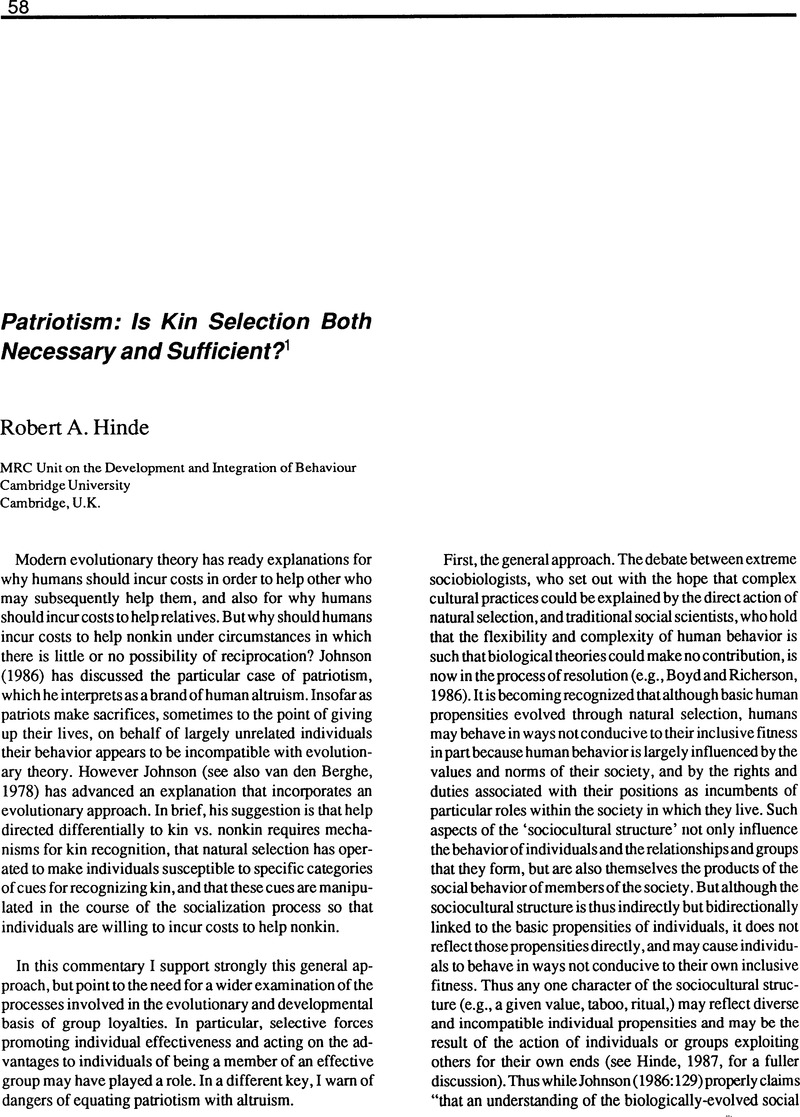Crossref Citations
This article has been cited by the following publications. This list is generated based on data provided by Crossref.
Ross, Marc Howard
1991.
The Role of Evolution in Ethnocentric Conflict and Its Management.
Journal of Social Issues,
Vol. 47,
Issue. 3,
p.
167.
Wong, Yuwa
1994.
Impotence and Intransigence: State Behavior in the Throes of Deepening Global Crisis.
Politics and the Life Sciences,
Vol. 13,
Issue. 1,
p.
3.
Flohr, Anne Katrin
1994.
Fremdenfeindlichkeit.
p.
253.
Dietz, Thomas
and
Stern, Paul C.
1995.
Toward a theory of choice: Socially embedded preference construction.
The Journal of Socio-Economics,
Vol. 24,
Issue. 2,
p.
261.
Hinde, Robert A.
2000.
Perspectives in Ethology.
Vol. 13,
Issue. ,
p.
283.





